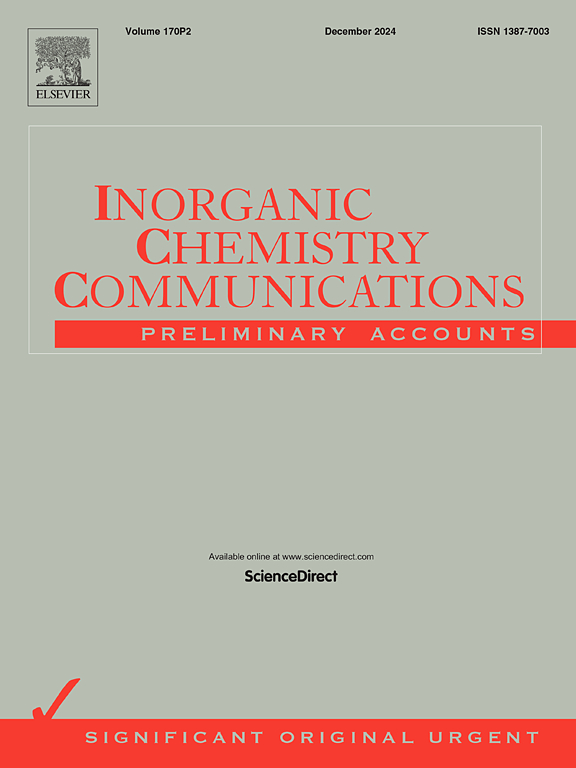CuBi2O4光电化学电位改进研究进展:能源应用
IF 4.4
3区 化学
Q1 CHEMISTRY, INORGANIC & NUCLEAR
引用次数: 0
摘要
CuBi2O4或铜铋氧化物是最重要的尖晶石氧化物,在光催化应用中显示出良好的潜力。由于二氧化钛(TiO2)是一种广泛使用的吸收紫外光的光催化剂,CuBi2O4也可以吸收可见光,因为它的带隙能量更窄(1.5-1.8)eV,这使得它在各种应用中效率更高,因为紫外光并不普遍。CuBi2O4也被用作光电化学(PEC)电池的光电极材料。除光催化作用外,由于其结构稳定性和良好的容量使其适合于有效的电荷储存和长期循环,它还被专门用作电池的电极材料。近年来,通过水热法、溶胶-凝胶法、共沉淀法等方法合成CuBi2O4,提高了CuBi2O4的表面积和工程形貌,从而提高了CuBi2O4的储能性能。CuBi2O4也与钙钛矿和光催化剂(如SrTiO3、TiO2、ZnO等)形成异质结,增强了其光电流密度和光稳定性,但这是相当具有挑战性的。因此,本文综述了cubi2o4基材料的合成方法及其在光电化学水裂解制氢、二氧化碳还原、太阳能电池和电池等方面的应用,阐述了其在能源生产中的重要性。本文章由计算机程序翻译,如有差异,请以英文原文为准。

Recent advances in photoelectrochemical potential improvement of CuBi2O4: Energy applications
CuBi2O4, or copper bismuth oxide, is the most important spinel oxide and a promising material that shows its excellent potential in photocatalytic applications. As titanium dioxide (TiO2) is a widely used photocatalyst that absorbs UV light, CuBi2O4 absorbs visible light too because of its narrower band gap energy (1.5–1.8) eV, and this makes it much efficient in various applications, as UV light is not widespread. CuBi2O4 is also used as a photoelectrode material for photoelectrochemical (PEC) cells. In addition to photocatalysis, it is specifically used as an electrode material in batteries as its structural stability and good capacity make it suitable for effective charge storage and long-term cycling. Recent advances in the synthesis of CuBi2O4 from the hydrothermal method, sol–gel method, co-precipitation, etc., have enhanced its production with improved surface areas and engineered morphologies, hence improving its performance in storing energy. CuBi2O4 also forms heterojunctions with perovskites and photocatalysts (such as SrTiO3, TiO2, ZnO etc.), which enhance its photocurrent density and photostability, but it is quite challenging. Hence, this review highlights the CuBi2O4-based materials, with their synthesis methods and applications in the photoelectrochemical H2O splitting for H2 generation, CO2 reduction, solar cells, and batteries that describe their importance in producing energy.
求助全文
通过发布文献求助,成功后即可免费获取论文全文。
去求助
来源期刊

Inorganic Chemistry Communications
化学-无机化学与核化学
CiteScore
5.50
自引率
7.90%
发文量
1013
审稿时长
53 days
期刊介绍:
Launched in January 1998, Inorganic Chemistry Communications is an international journal dedicated to the rapid publication of short communications in the major areas of inorganic, organometallic and supramolecular chemistry. Topics include synthetic and reaction chemistry, kinetics and mechanisms of reactions, bioinorganic chemistry, photochemistry and the use of metal and organometallic compounds in stoichiometric and catalytic synthesis or organic compounds.
 求助内容:
求助内容: 应助结果提醒方式:
应助结果提醒方式:


